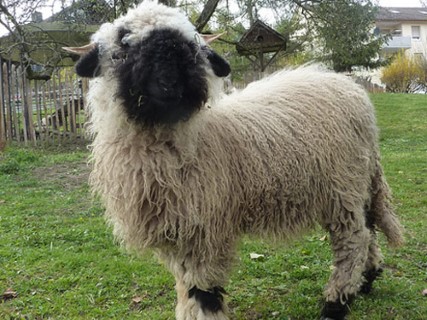The Valais Blacknose sheep, originating from the picturesque Valais region of southern Switzerland, represent a captivating and rare dual-purpose breed renowned for their distinctive appearance and versatile characteristics. This breed is highly valued for its meat and wool production capabilities, making it a prized asset among livestock enthusiasts and breeders alike.
Both rams and ewes of the Valais Blacknose breed are adorned with magnificent horns, adding to their majestic presence. However, it is their striking facial features that truly set them apart. The signature black-hole face of the Valais Blacknose sheep is a remarkable sight to behold, with their faces, eyes, and noses adorned in deep black hues, contrasting beautifully against the backdrop of long, luxurious white wool.
In their native habitat of the high mountains, Valais Blacknose sheep have evolved to thrive in rugged terrain, displaying remarkable adaptability and resilience. These hardy animals are known for their ability to graze on even the steepest, stoniest slopes, demonstrating their exceptional grazing capabilities and resourcefulness in challenging environments.
Beyond their native Switzerland, Valais Blacknose sheep have gained recognition and popularity in other regions as well. In Germany, enthusiasts and breeders appreciate the unique qualities of this breed and have embraced its presence. Moreover, recent developments have seen the introduction of Valais Blacknose sheep to Scotland, where a notable breeder named Raymond Irvine imported a select group comprising ten ewes and one ram. This expansion of the breed's presence underscores its growing appeal and potential for further establishment in diverse geographical contexts.
In summary, the Valais Blacknose sheep epitomize a perfect blend of elegance, functionality, and adaptability, making them a cherished breed cherished by enthusiasts worldwide. With their captivating appearance, robust constitution, and versatile attributes, these remarkable sheep continue to captivate the hearts and minds of all who encounter them, symbolizing the enduring allure of traditional livestock breeds in modern agricultural landscapes.
